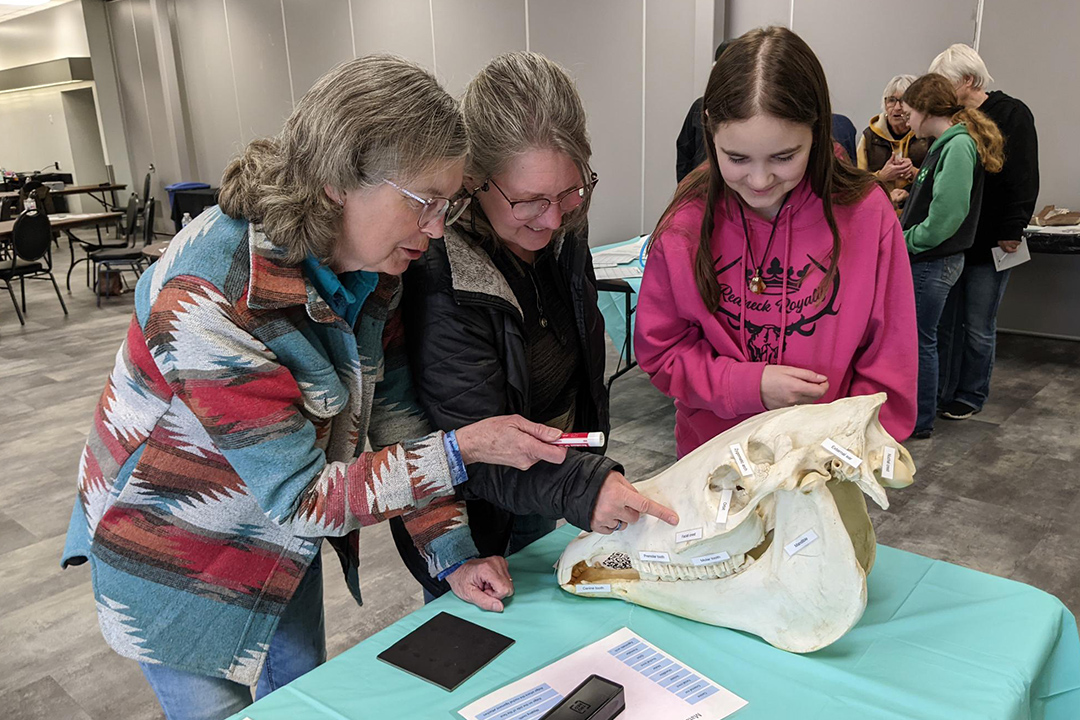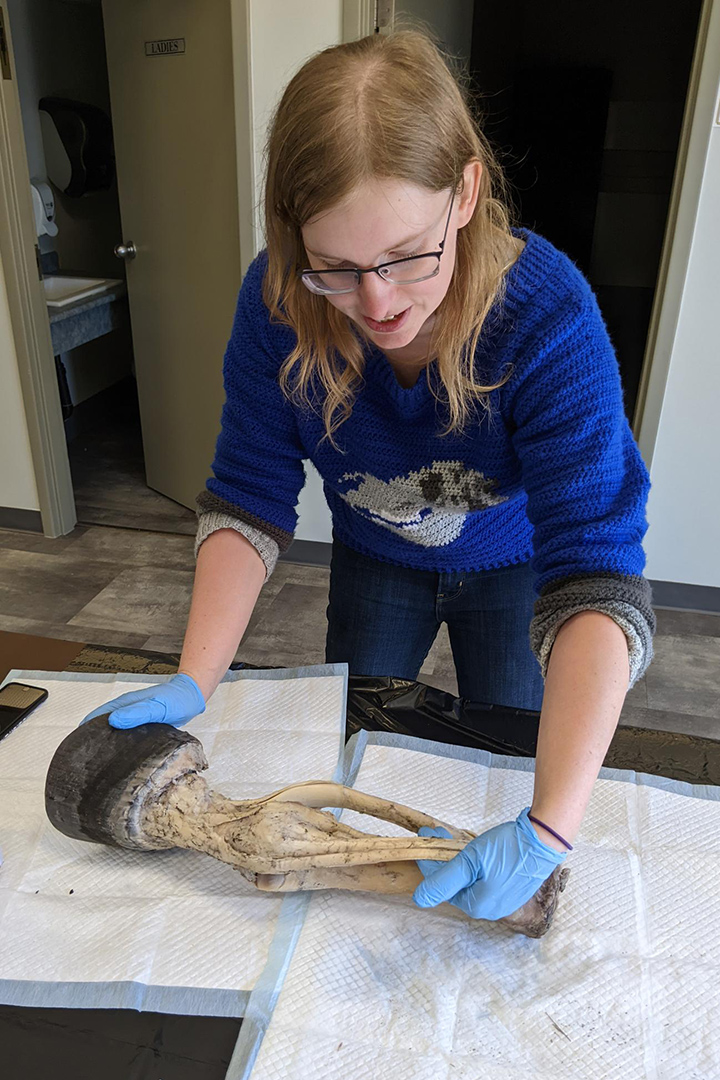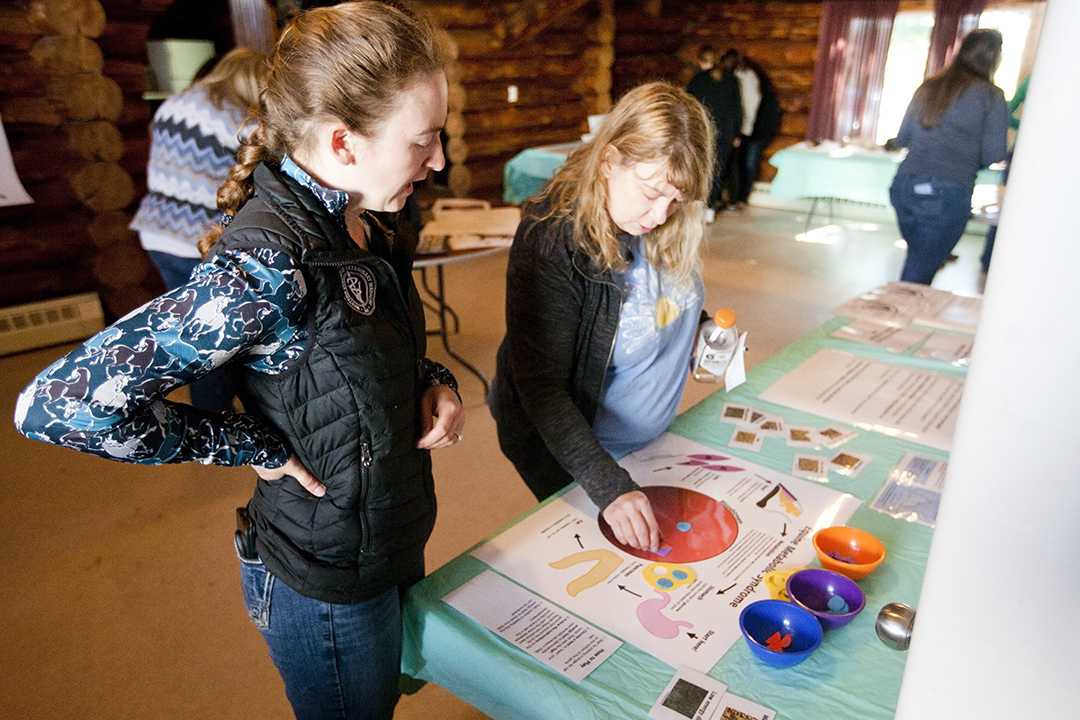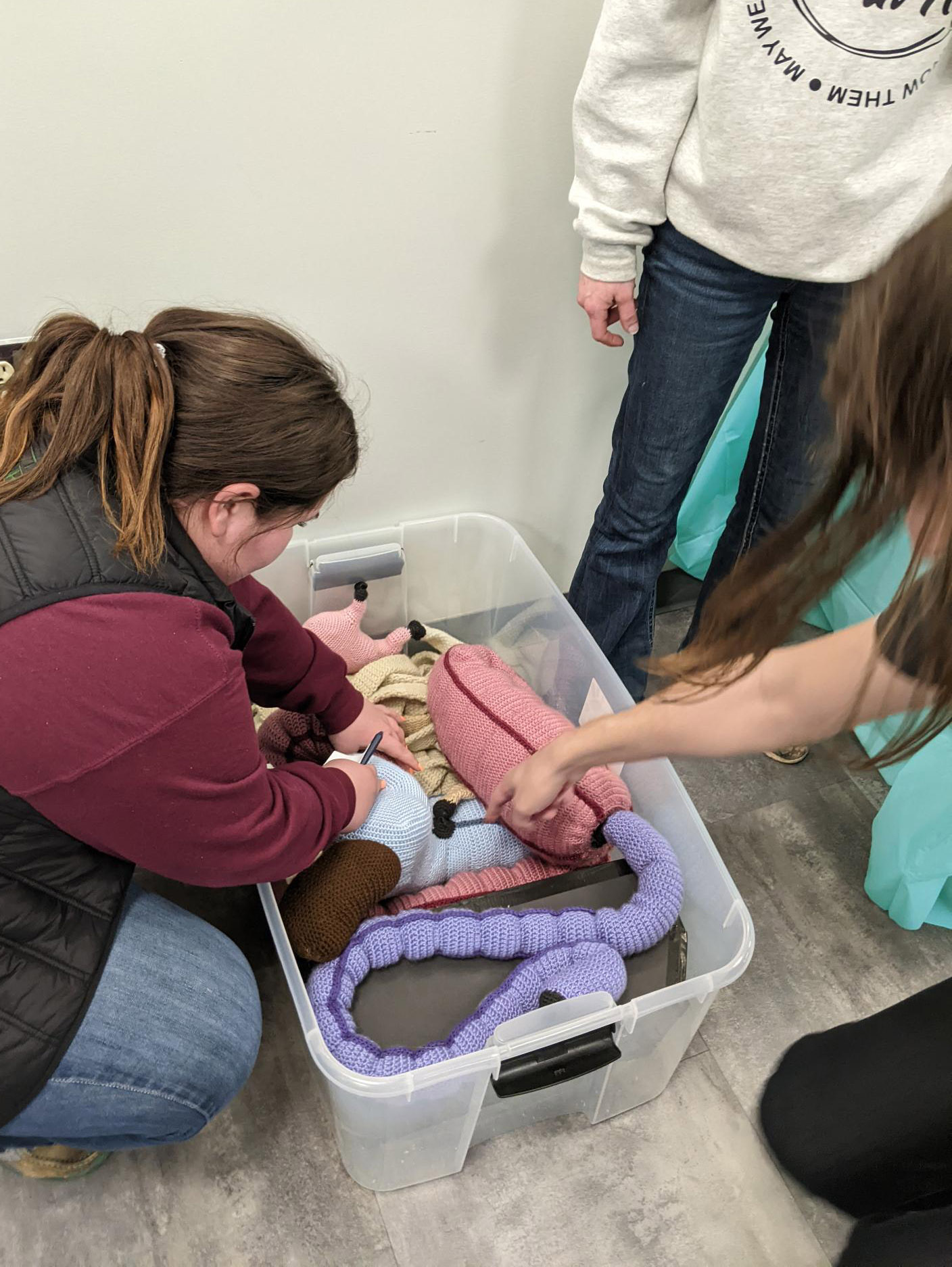
Workshops make equine anatomy come alive
Tired of memorizing the intricacies of equine anatomy? Put that textbook aside — Dr. Madison Ricard (DVM, PhD) offers an entertaining way to help make learning about horses’ limbs, organs and systems much more memorable for people of all ages.
By Lynne Gunville
Ricard is a veterinarian, a board-certified pathologist and a lecturer at the Western College of Veterinary Medicine (WCVM). While completing her PhD program at the WCVM, she developed hands-on anatomy workshops that are designed for groups of horse lovers aged 12 and older.
All that she requires is a host who can provide a space large enough for groups of 15 or more participants and enough time to run the three-hour workshop.
“It’s [The workshop} actually a series of stations that give people hands-on interactive activities,” explains Ricard. “There’s a list of instructions on the wall with the goal for each station, and it’s up to you [each participant] to decide what you are most interested in and what you want to investigate and play around with. I’m around to answer questions and give additional fun facts and information.”
Ricard’s learning model was largely inspired by one of her favourite childhood haunts in her home province of Alberta: Edmonton’s Telus World of Science. She particularly enjoyed “The Human Body,” an exhibit that contained a variety of stations like the ones she has created for her equine anatomy workshops.
Her learning stations focus on topics and activities that relate to the various equine organs and structures as well as equine management issues and equine diseases. Activities range from a board game demonstrating the development of equine metabolic syndrome (a hormonal disorder in horses) to a crocheted model of the equine gastrointestinal tract that can be used to replicate different types of colic — or abdominal pain — in horses.
While several stations are paper-based, Ricard has also developed some wet specimens, including horse hearts and anatomical samples of internal organs such as the lung, liver and spleen. She’s also preparing more specimens — a full fore limb, a hind limb model and a full spine.
“Having the wet specimens and the bones and all of the hands-on materials — it makes the anatomy come alive to them and shows them how that would actually apply to their living horse,” says Ricard.

She adds that the workshops aren’t just for kids: “I’ve done some of these for adults, and they really enjoyed it as well. Because it’s hands-on and very interactive, it gives a sense of fun and interest to the topics.”
While Ricard is happy to see the participants involved and enjoying the activities, she points out that the goal is to enhance overall education in the horse community. Gaining a better understanding of equine anatomy will ultimately benefit riders and owners as well as their horses and veterinarians.
“The more people understand how science works and how research works, and even how their animals work, it gives them the information they need to make better decisions about [horse] care and management,” says Ricard. “It also gives a bit of a context to them about what’s going on when something medical happens.”
In addition to the workshops, Ricard has created an informational website that includes simple explanations and summaries of over 250 different equine diseases.

Ricard has also developed resources for veterinary students who are preparing for the North American Veterinary Licensing Examination (NAVLE), and she has acquired over 2,000 followers on her “Pathology and Ponies” Facebook page where she shares interesting cases from her own experiences as well as those of others.
“Obviously at the end of the day, disease is pretty cool,” says Ricard. “I try to always share interesting images with each post so they’re eye-catching and people can really engage with that material.”
Ricard’s outreach work combines her love for knowledge with her lifelong love of horses. She owned her first horse at the age of four and eventually developed into an accomplished show jumper who competed for 10 years at prestigious venues — including Spruce Meadows and Rocky Mountain Show Jumping in southern Alberta.
Although Ricard had originally planned to become an equine veterinarian, her goals changed while attending the University of Calgary Faculty of Veterinary Medicine when she developed a keen interest in pathology. After completing her veterinary degree in 2020, Ricard began graduate studies based in the WCVM’s Department of Pathology with a focus on equine reproduction research. She became a board-certified veterinary pathologist in 2023 and completed her PhD degree in anatomic pathology this summer.
“I think I’ve always been a teacher at heart. I really love teaching and science communication,” says Ricard, who recently joined the WCVM's Department of Veterinary Biomedical Sciences as a faculty member. “I just love being able to take the information that I have acquired through my veterinary degree and through my residency program and make it more accessible to people by giving it to them in a format that they find palatable and understandable.”
Contact Dr. Madison Ricard (madison.ricard@usask.ca) for more details about the anatomy workshops.